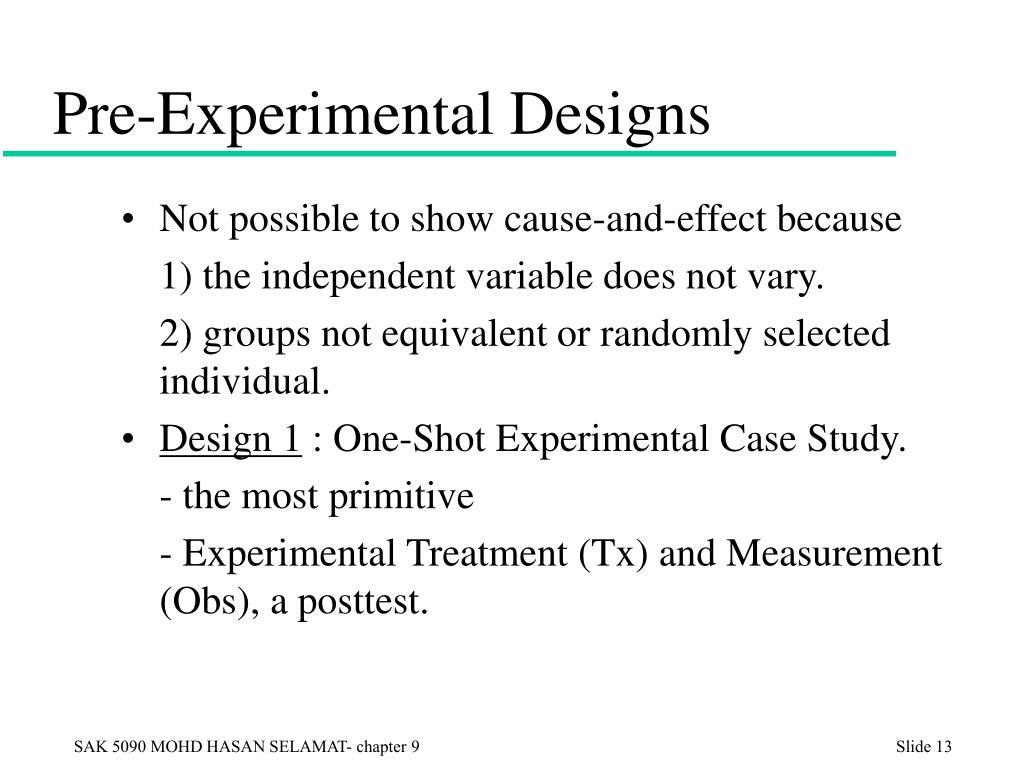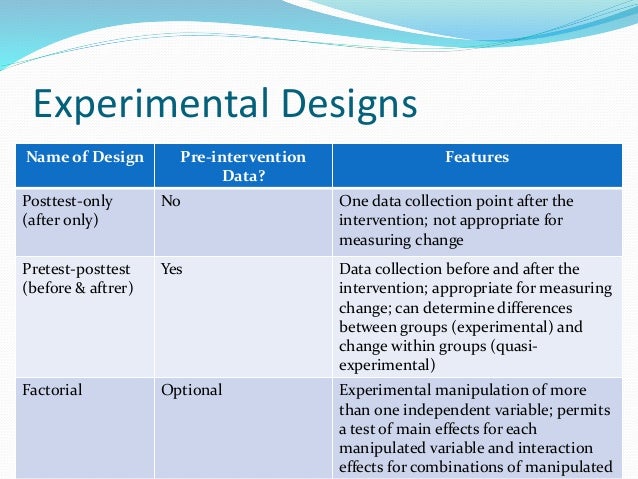Table Of Content

Imagine wanting to know how people of different ages feel about a new video game. Instead of waiting for years to see how opinions change, you could just ask people of all ages what they think right now. So next time you read about a groundbreaking discovery in medicine or technology, chances are a True Experimental Design was the VIP behind the scenes, making sure everything was on point. It's been the go-to for rigorous scientific inquiry for nearly a century, and it's not stepping off the stage anytime soon. This may be a very risky thing to do in medical cases because it may lead to death or worse medical conditions.
Repeated Measures Design
There are several actions that could trigger this block including submitting a certain word or phrase, a SQL command or malformed data. In this article, we will not only discuss the key aspects of experimental research designs but also the issues to avoid and problems to resolve while designing your research study. An experimental research design helps researchers execute their research objectives with more clarity and transparency. A double-blind experiment is when both the subjects and investigator do not know who receives the placebo and who receives the treatment.
What are the Data Collection Methods in Experimental Research?
Create your experimental design with a simple Python command by Tirthajyoti Sarkar - Towards Data Science
Create your experimental design with a simple Python command by Tirthajyoti Sarkar.
Posted: Wed, 04 Jul 2018 02:31:34 GMT [source]
The other person is placed in a room with a few other people, enjoying human interaction. There will be a difference in their behaviour at the end of the experiment. Before employing a job seeker, organizations conduct tests that are used to screen out less qualified candidates from the pool of qualified applicants. This way, organizations can determine an employee’s skill set at the point of employment. Imagine taking 2 samples of the same plant and exposing one of them to sunlight, while the other is kept away from sunlight.

Types of Experimental Design
Mostly related to a laboratory test procedure, experimental research designs involve collecting quantitative data and performing statistical analysis on them during research. Experimental research design is a framework of protocols and procedures created to conduct experimental research with a scientific approach using two sets of variables. Herein, the first set of variables acts as a constant, used to measure the differences of the second set.
The experiment should be conducted a number of times to insure that the results are real. In addition, within an experiment there should be an appropriate number of replications. An experiment designed to investigate the effects of fertilizer on plants would use many plants in each group. The experiment is designed so that only one variable is tested at a time.
Independent variable (IV)
In a similar way, Crossover Design allows subjects to experience multiple conditions, flipping them around so that everyone gets a turn in each role. It's really good for studying things as they are in the real world, without changing any conditions. The correlational design has roots in the early days of psychology and sociology. Pioneers like Sir Francis Galton used it to study how qualities like intelligence or height could be related within families. First off, it's the go-to for studying change over time, whether that's how people age or how a forest recovers from a fire.
Developmental Psychology Research Methods - Verywell Mind
Developmental Psychology Research Methods.
Posted: Wed, 01 Nov 2023 07:00:00 GMT [source]
Observation methods
All variables which are not independent variables but could affect the results (DV) of the experiment. This type of design became popular in the early stages of various scientific fields. Researchers used them to scratch the surface of a topic, generate some initial data, and then decide if it's worth exploring further. In other words, pre-experimental designs were the stepping stones that led to more complex, thorough investigations. They started creating structured plans—what we now call experimental designs—to get clearer, more trustworthy answers to their questions. Independent variables are not introduced, withdrawn, or manipulated in non-experimental designs, but the same may not be said about experimental research.
Discussion topics when setting up an experimental design
Although closely related to a true experiment, quasi-experimental research design differs in approach and scope. The research type you use will depend on the criteria of your experiment, your research budget, and environmental limitations. Experimental research enables researchers to conduct studies that provide specific, definitive answers to questions and hypotheses.
Psychology Resources
Therefore, we can conclude that sunlight will aid growth in all similar plants. The researcher then compared the scores on the exam for students in each condition. The results revealed that natural sunlight produced the best test scores, followed by yellow light and fluorescent light. One hour after consuming the bars, participants ran on a treadmill at a moderate pace for 15 minutes.
Thus, she must, at a minimum, measure the number of episodes that occur after the intervention, which is the post-test. In a classic experimental design, participants are also given a pretest to measure the dependent variable before the experimental treatment begins. Sometimes randomisation isn’t practical or ethical, so researchers create partially-random or even non-random designs.
Clearly, these were not meant to be interventions or treatments to help depression, but were stimuli designed to elicit changes in people’s depression levels. This is just one of many examples of social scientific experimental research. In a controlled experiment, the researchers, or investigators, decide which subjects are assigned to a control group and which subjects are assigned to a treatment group. In doing so, we ensure that the control and treatment groups are as similar as possible, and limit possible confounding influences such as lurking variables.
The aspect that varies between groups is called the experimental (independent) variable. Their designs can also include a pre-test and can have more than two groups, but these are the minimum requirements for a design to be a true experiment. A lurking variable is usually unobserved at the time of the study, which influences the association between the two variables of interest.
Cluster analysis is used to group similar cases or observations together based on similarities or differences in their characteristics. Condition one attempted to recall a list of words that were organized into meaningful categories; condition two attempted to recall the same words, randomly grouped on the page. This should be done by random allocation, ensuring that each participant has an equal chance of being assigned to one group. Others, like Sequential Design, are flexible and adaptable, making quick changes based on what they learn. And let's not forget the adventurous Field Experiments, which take us out of the lab and into the real world to discover things we might not see otherwise.
Yet it is widely used in research institutes and commercial industries, for its most conclusive results in the scientific approach. Solomon four-group designs are challenging to implement in the real world because they are time- and resource-intensive. Researchers must recruit enough participants to create four groups and implement interventions in two of them. What is important to note about the difference between confounding and lurking variables is that a confounding variable is measured in a study, while a lurking variable is not.
Sequential Design operates in a similar fashion, allowing researchers to make decisions at different stages based on what they've learned so far. Covariate Adaptive Randomization would make sure that each treatment group has a similar mix of these characteristics, making the results more reliable and easier to interpret. Imagine if all the professional-level players ended up on one soccer team and all the beginners on another; that wouldn't be a very informative match!

No comments:
Post a Comment